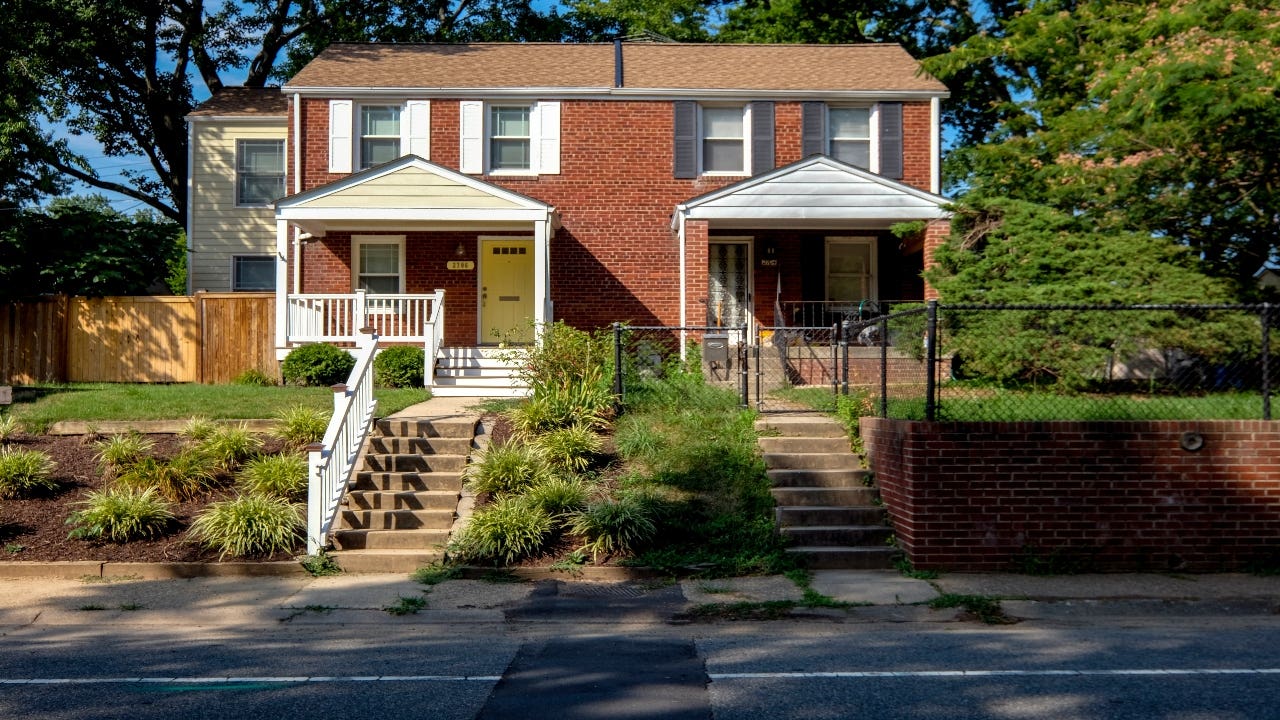‘Missing middle’ homes could ease affordability squeeze, architect says

In his new book, “Missing Middle Housing,” Parolek proposes building more medium-density housing, such as duplexes, four-unit buildings and cottage apartments. Those housing types were common in American cities before World War II. They’ve all but disappeared since. Single-family suburbs and high-rise condos have dominated the development scene.
Parolek, who runs Opticos Design in Berkeley, California, calls for using pre-war neighborhoods as a template for today’s development. These cozier housing types are smaller than suburban houses, but they also cost significantly less.
“Missing middle is not the silver bullet, but it’s one tool that every city needs in their toolbox to deliver more affordability or attainability in housing,” Parolek says.
The following is a conversation with the architect that has been edited for clarity.
What is the concept of missing-middle housing?
Parolek: The premise for missing-middle housing is that historically and even currently, we’ve done a really good job of putting planning, zoning, financing and development industries in place to deliver single-family homes on one end of the spectrum. And on the other end of the spectrum, over the past 15 to 20 years in particular, we’ve established similar systems to deliver the larger multifamily or condo projects. There’s a full range of housing types in between those — duplexes, triplexes, cottage courts, smaller courtyard apartment buildings. They existed in neighborhoods before the 1940s, but we’ve pretty much stopped building them. Starting in 1979, there’s been a dramatic decrease in the number of missing-middle housing buildings that have been developed. It’s been a very steady decline. We haven’t delivered them because there’s a number of barriers in place.
We define missing-middle housing as buildings with fewer than 19 units. The core of the missing middle is 12 units or less in house-scale buildings. Less than 10 percent of housing units produced between 1990 and 2013 were missing-middle scale. You used to be able to open a Sears & Roebuck catalog and buy a fourplex or a sixplex. Most people don’t realize that you could buy a missing-middle housing type from the Sears & Roebuck catalog back in the early 1900s. We’ve definitely come a long way in the wrong direction for the delivery of these housing types.
As you’re describing these housing types, I’m envisioning an older neighborhood near a downtown or urban core.
Parolek: That’s an excellent location. Walkability tends to be a really key aspect to either renting or selling the missing-middle units. Those pre-1940 neighborhoods adjacent to a downtown are excellent opportunities. There are also opportunities in greenfield locations. One example of that is the Daybreak community in the Salt Lake City region. We designed a project called Mews, a missing-middle townhouse community. Our client was able to deliver units at a price point about $25,000 less than their conventional townhouse product.
When you say attainable, how much do missing-middle units sell for?
Parolek: It obviously varies. At Daybreak, the prices started at $189,000 and went up to $220,000. They were having a really hard time delivering anything for under $275,000 to $300,000 in the townhouse market. Obviously, if you jump into a hotter market, like the Bay Area, those numbers will spike. One of the things we’ve seen in the last two years is a real spike in costs for construction and the entitlement process. That Mews home that started at $189,000 in the first phase had to jump up to a little over $200,000 to cover those increases in costs.
That price range sounds attractive. What are buyers giving up?
Parolek: We’re removing the cost of that garage space from the equation. With that walkability that’s being delivered in these neighborhoods, a household may only have one car, or they’re using Uber or Lyft or a carshare. A lot of people are OK parking on the street. We did the planning for the first missing-middle community in the country near Omaha, Nebraska, and it’s delivering one parking space per unit, and the second parking space is on the street. Our client is finding people are really happy to park right outside their front door. They have complete observation of their car at all times, and they’re able to use the front door, as opposed to going through a garage or a back door. And smaller units are really key. We’re finding that the more walkable a location is, the smaller the units that will be acceptable to the market. Thirty percent of households across the country are single-person households, so the smaller units are really attractive to that segment.
What are the biggest barriers to these kinds of housing?
Parolek: Unfortunately, there’s a lot of barriers. First and foremost are zoning barriers. Part of our work is to go into cities and do targeted or wholesale changes to their zoning codes to enable missing middle and walkability. Sometimes cities don’t even have zoning that really and truly allows for missing-middle housing. Their zoning will go from allowing single-family homes and maybe duplexes, then it jumps up to 55-foot-tall buildings. Even in cities that do have medium-density zoning, densities are typically too low, setbacks are typically too high, parking requirements are too high. The culmination of all those make it really hard to deliver these housing types.
We just worked with a city to really analyze their planning policies. A typical lot size in this city was 60 feet wide, and the zoning district had a required side setback of 25 feet, so there was actually only a 10-foot strip of allowable building envelope left over — which is obviously not viable.
Outside of the planning and zoning barriers, there are other barriers. There’s neighborhood opposition that’s always a challenge. These types are not easily classifiable by industry standards. It’s usually just the small local builder delivering these missing-middle units, so there’s no one building them at scale. The other thing is building codes. When you jump up above three units, it becomes more cumbersome and costly to build this type of housing. The list goes on, but that’s just a glimpse of the top issues.
During the COVID crisis, we’ve heard so much about people not wanting to live in high-rise towers. How does missing-middle housing work during a pandemic?
Parolek: The missing-middle housing types are a real sweet spot between the suburban alternative and the very urban alternative. The types typically do not have shared entries. They do not have shared corridors. And they’re typically walk-up, meaning they don’t have shared elevators. And most of them have some private outdoor space, which gives people that little bit of elbow room that they’re looking for. These housing types are positioned really well to provide a high quality of living during COVID and post-COVID.
We’ve heard a lot recently about accessory dwelling units. How do they fit into the missing-middle picture?
Parolek: I’m a huge fan of accessory dwelling units. I’m glad to see they’re gaining so much attention. I put them on the missing-middle spectrum — but I don’t want cities to get so wrapped up in ADUs that they forget about duplexes, triplexes and fourplexes. In many markets, ADUs are not going to be enough. They’re a step in the right in the direction. But the next step is let’s talk about this full range of missing-middle housing types.





